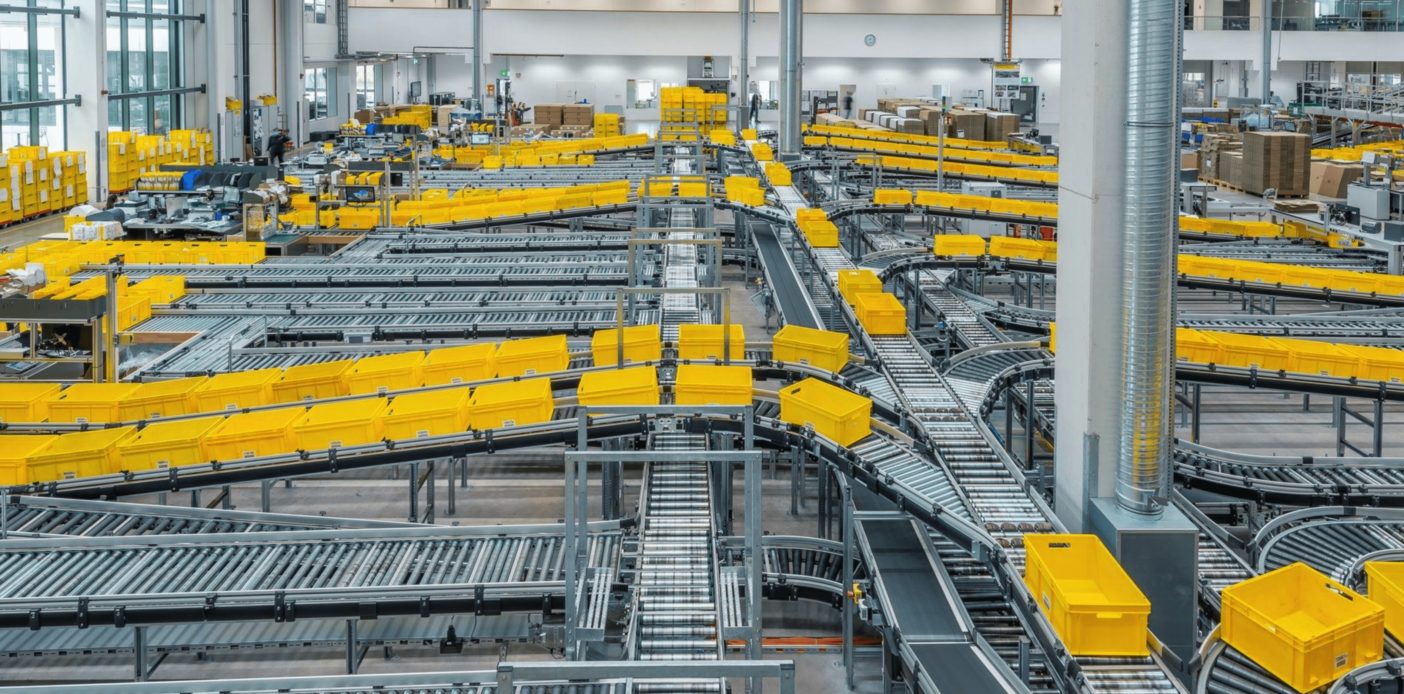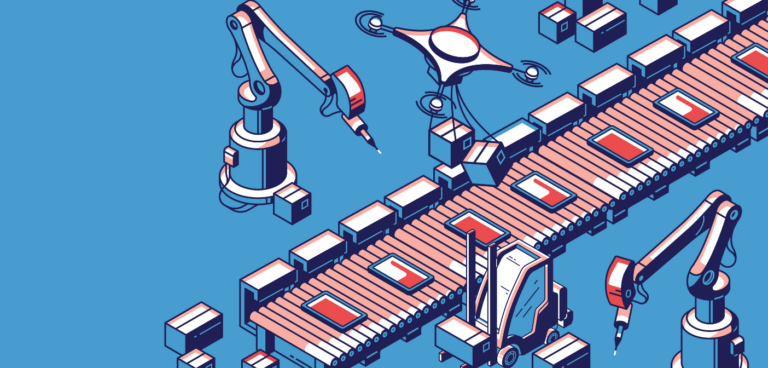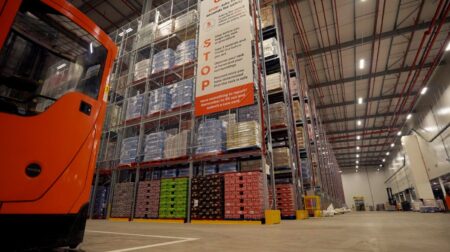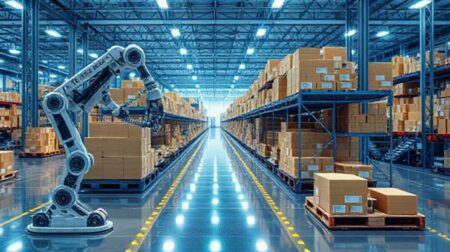What is Robotics-as-a-Service and why is it becoming so popular? Ursula O’Sullivan-Dale explores the recent rise of the rent-a-robot model…
The robotics and automation industries have always understood the value of outsourcing installation and integration services to the experts. By allowing those with the right equipment and expertise to do the heavy lifting when it comes to automating operations, businesses benefit from faster deployment times, can scale up and down based on business need and embed resilience in preparation for more turbulent periods.
This model of service provision is reflected in the latest innovation shaking up the robotics and automation industries: Robotics-as-a-Service (RaaS). This subscription-based model offers companies the chance to lease robotic or automated solutions, without having to pay the full upfront cost of expensive hardware or commit to long-term contracts or investments. Not only does this lead to a faster ROIs, but also opens up the possibilities of automating processes to organisations that could not previously afford it. This provides new opportunities for small to medium-sized enterprises (SMEs) to grow their operations, while also helping firms of all sizes address issues like labour shortages or an inability to meet growing consumer demands. However, navigating this growingly diverse and complicated marketplace can be intimidating for those looking to automate for the first time – so what exactly is Robotics-as-a-Service and what kinds of organisations should be looking to invest?
Hitting the reset button
The struggle to recruit and retain manual labour across the e-commerce and logistics sectors has proven to be one of the biggest challenges facing these industries today. Problems such as disruptions to supply chains from the pandemic, an ageing workforce, the ever-growing skills gap and high turnover rates will take years to properly fix – in the meantime, businesses are losing money and manpower in the short-term. By offering companies the chance to hit the reset button on the traditional labour model, RaaS can not only empower organisations during disruptive periods, but also free up time for workers to enjoy more meaningful tasks. On the motivations for firms to pursue automation at a reduced upfront cost, Joe Couto, EVP robotics and 3PL at logistics software and automation solutions provider Körber Supply Chain, says that, with RaaS, firms can “apply different robotics solutions in a single facility, which enables them to address broader industry challenges, especially in labour”. He adds, “Körber found that more than one in three supply chain professionals are churning over at least half of their warehouse associates each year. Not only is there a worldwide shortage of staff, but it is also becoming increasingly difficult to attract and retain workers into a warehouse environment that can be both physically demanding and dangerous. Collaborative bots can improve warehouse staff well-being by reducing their walking by almost 50%,” making hard-to-recruit industries and environments more attractive.
On the importance of targeting automation at jobs in roles with low recruitment and high turnover rates, Sid Shaikh, head of robotics at tunnelling technology developer HyperTunnel, points out that it is “predominantly in low-paid sectors with repetitive tasks that is becoming increasingly difficult to recruit staff and retain them. High staff turnover and under staffing has a direct impact on the output quality of the services provided. It is for these very reasons the market segments that are already starting to show growth using RaaS are healthcare, hospitality, security, meal preparation, agriculture, survey inspection and maintenance and cleaning. Construction is also an interesting example of an industry that is starting to embrace robotics – it has shown that robotics and RaaS can bring huge benefits in reducing costs, increasing speed of delivery, safety and consistency” of project delivery. This is especially true, Shaikh continues, in the context of “global labour cost variation, which has made it difficult for some countries to maintain market competitiveness without the use of robotics and automation.”
Adding to this, Oana Jinga, co-founder and CCO of London-based warehouse robotics company Dexory, reinforces the value of moving away from the labour model that has been used throughout logistics, and other industries, for decades. With the benefits of automation up for constant discussion in this space, she points out the unique benefits of RaaS, which provides the necessary technology but “shifts the weight and responsibility of expertise on to the vendor, thereby simplifying the process for the business”. She adds that, “one of the main blockers for adoption for supply chain executives has been not having the knowledge and expertise to start a robotics investment. With RaaS, the supporting platforms have intuitive tools that enable workers of any level to learn to use them.”

Risky business
Another major motivator for firms that are considering automation but are unsure about committing to an expensive and complex installation process is the removal of certain risks through RaaS. As Sid Shaikh explains, “the RaaS model significantly shifts risk from the client to the robot supplier as, depending on the RaaS contract terms, the robot supplier will typically have output criteria to achieve. If within the RaaS contract term the robot supplier is correctly incentivised, the client will get continuous improvement for free if the RaaS fees are linked to throughput or quality. The RaaS supplier may be able to share improvements across clients and justify the cost of product improvements.”
By contracting a trusted vendor partner that can absorb the costs of upgrading an automated or robotic system, businesses are spared the risk of allocating further capital expenditure to the maintenance or improvement of a leased solution. Reinforcing the value of having the burden of maintenance taken on by a supplier, Jinga comments that “the most significant consequence of a subscription model is that it eliminates the upfront costs of purchasing or upgrading and then maintaining machinery and infrastructure on site, making the overall operational process far more efficient and agile. This means that fast-growing companies can grow at an incredible rate if they’re able to continually invest in new RaaS models to support them.”
Gabriel Noury, robotics product manager at UK-based software company Canonical, also highlights the unique opportunities of RaaS for SMEs entering a daunting marketplace of robotics and automation vendors for the first time. He explains that companies are now able to “only pay for the service, for example, the number of boxes picked by the robot, rather than the actual device. As a result, the ROI analysis is streamlined, the risk is minimised, and the procurement process is expedited.” However, Noury also points out one significant drawback of the RaaS model: the fact that businesses do not own the equipment, which can limit their ability to request customised solutions. “This lack of ownership also poses a risk should the robotics company declare bankruptcy, for example, or changes ownership,” Noury says. He adds, “whatever changes occur, a business using the service has no power in the decision-making process.”
Sid Shaikh agrees, expressing that “crafting a mutually beneficial RaaS contract is essential to achieving a long-term and lucrative partnership between the robot supplier and client. This can be tricky especially when the client is new to RaaS (firms don’t know what they don’t know). Seeking advice from veterans of RaaS is key.” This is especially important, he believes, given that “consumer expectation for new products, product choice, product advancement and product customisation has shortened development cycles and reduced product lifecycles.”
Fluctuation in levels of service provision is, however, well-suited to the production schedule of some industries. Such flexibility is especially pertinent, as Jinga explains, “in the healthcare and agricultural sectors, both of which can benefit from the scalability and flexibility of RaaS. Agriculture, for example, is often seasonal work, so the ability to rent as a service for three to six months a year fits well.”
Head in The Cloud
One part of the conversation around RaaS which can be overlooked is that, when introducing new automated systems, software and IT integration is just as important as hardware or machine components. Properly integrating a solution with an organisation’s new or existing operating system is key to ensuring successful deployment and that a business actually benefits from RaaS. As Adam Lawrence, VP of Cloud Solutions at robotic process automation software developer SS&C Blue Prism, explains, “in addition to fiscal savings, organisations save the extensive time demands managing and operating an intelligent automation platform requires, freeing management and IT teams to focus on other strategic areas, like innovation, while the provider manages the cloud intelligent automation platform.
“Organisations don’t have to worry about integrating advanced technologies into their platform or keeping up with the latest tech because their cloud platform offers these ready-to-use technologies. The cloud also makes way for flexible and agile deployment and commercial models. In the real world, this equates to getting significant business value more quickly and creating more impact in the market. Companies can customise their intelligent automation strategy to meet their unique needs.”
Another of the central considerations for organisations bringing leased equipment into their existing IT and data management systems is, as Gabriel Noury explains, that “RaaS models require a deeper integration of observability from robotics companies. This means that in order to charge for the service, the vendor needs to gather live data on the robot’s performance within a company. However, this creates a security risk if the robotics vendor does not have robust security policies and procedures in place. Therefore, it is crucial for businesses to choose RaaS vendors with secure systems to ensure the safety of their data – at the most basic level, a business should request security maintenance from the vendor. Companies need to carefully consider the potential limitations of not owning the equipment, and whether the RaaS model aligns with their long-term automation goals. While RaaS can provide a flexible and cost-effective solution for some businesses, assessing its suitability and risks for individual needs is essential.”
However, Noury also believes RaaS could lead to some major developments in cybersecurity, and that increased adoption of RaaS in combination with the “increased importance of data in the robotics industry [means] cybersecurity regulations will become more crucial than ever to protect users. The EU’s new cybersecurity act is a clear indication of this trend, highlighting the need for increased security measures to safeguard robotics devices and their users.” Ultimately, he believes “this increased focus on cybersecurity will lead to more secure and safer robotics devices for everyone”.
Somebot that I used to know
As mentioned, one of the chief benefits of a the more flexible service model like RaaS is both faster and more tailored technological deployments, which reduce disruption to businesses by significantly cutting downtimes during installation. While this model is, theoretically, very appealing to smaller organisations who cannot afford losses in productivity or larger capital investments mandated by conventional installations, Adam Lawrence adds that “when choosing RaaS models, companies can choose between time-based leases and task-based leases which each have their merits and disadvantages”. Lawrence expresses that it can be very difficult for organisations to understand the extent of their own requirements, let alone select the most appropriate or efficient solution based on these needs. He expresses that “the complexity of subscription models and the contractual obligations can prove challenging for businesses who are looking to introduce RaaS solutions to their operations. RaaS is often selected because it is quick and easy to start…but doesn’t necessarily lend itself to organisations who want to implement at an enterprise level.
“Often, RaaS vendors will provide a fully managed service where automations are designed, built and run by the vendor. This is great for customers who’re getting started or who don’t want to invest in a team of automation experts, but without local automation knowledge, how does the customer know they’re getting value for money from their automations? Organisations that are serious about true enterprise level automation should consider at least some investment in an in-house centre of excellence team.”
Joe Couto from Körber similarly advocates for an expertise-driven approach, wherein experienced external consultants develop a deployment strategy based on their assessment of clients’ needs. Couto says, “for our customers, RaaS lets firms use [solutions such as] AMRs as demand dictates. The only ‘challenge’ is increasing demand; current market potential will lead to major industry consolidation in the upcoming years, and we are likely to see even more vendors emerge. To find one’s way in a rapidly changing market scene, businesses will depend more heavily on consultancy to find the right solution and partner.
“We see that particularly clearly with regard to integration expertise and embedding robotics in context of the end-to-end supply chain. Building and maintaining performance and resilient supply chain systems in traditional ways can be challenging due to the required level of expense, effort and expertise.” Referring to the difficulty organisations can have in single-handedly introducing end-to-end solutions, Shaikh adds that “in an industry where the business process is complex and challenging and requires specific expertise, it can be highly effective to enter into a RaaS agreement, rather than building a whole new capability and expertise in robotics. This is prevalent in higher risk segments where the business process has a level of uncertainty and contracts or projects are high value.”
Chain reaction
The intricacy of supply chains can make their management complex at the best of times, let alone when an organisation is attempting to introduce new systems or technologies. Joe Couto expresses the difficulty for businesses in keeping up within this marketplace that is constantly demands more speed and more agility from industry players. He says: “As in anything, the supply “chain” is only as strong as its weakest link. While many businesses have introduced innovative technologies to support critical functions, these systems are often isolated, preventing end-to-end process automation.” The difficulty of achieving cohesive automation throughout supply chain processes can create bottlenecks for organisations looking to adapt to rapidly changing expectations from their customers. Oana Jinga comments on how this is especially true in a post-pandemic world where, “almost overnight, inventories have had to be doubled and warehouses have had to cope with the growing demands. In this scenario, when everything was in flux, Robots-as-a-Service allowed businesses to keep going and also test and learn without the need for large upfront investments.”
Building on how RaaS can be used by struggling organisations to tailor their offerings based on demand, Couto says: “Körber’s 2022 Supply Chain Benchmarking survey found that in-store buying had declined from 58% to 28% of total purchases post-pandemic, and that the lowered cost of robotics represented an attractive way to see a quick ROI for businesses looking to bounce back from this decline.” This is partly because, as he explains, “the mixture of bots in a single facility can address multiple challenges and, for 3PLs, they can tie their RaaS term with that of their customers.”
Looking ahead
The versatility of Robotics-as-a-Service will have wide-reaching implications across not just the robotics and automation value chains, but also “on countries’ economies, providing new revenue streams for businesses and new employment opportunities for the workforce,” as Noury points out. Couto also believes that embracing the multiplicity and varied potential of flexible models like RaaS will be critical for embedding resilience by empowering firms through improved holistic visibility and optimisation of operations.
While many industry players have been keen to sing RaaS’ praises, there are other factors to consider before trying out the rent-a-robot model, with Sid Shaikh explaining that the service makes the same range of solutions available to organisations as well as their competitors. This, he says, “can present a serious challenge for firms trying to differentiate their offering or achieving healthy margins” and, though exclusivity agreements can be signed within market segments, “when firms are reliant on the robot platform to innovate and differentiate, they are then also at the mercy of the robot supplier”. Solutions to this, he suggests, include innovation drivers within the RaaS contract, which can be a “win-win for the supplier and client – especially if the client maintains exclusivity in their sector and the supplier can use the innovation across other non-compete sectors”.
This model of service provision can therefore drive innovation by having “a significant positive impact on the development cycles and user research of robotics companies”. By reducing the cost barrier of robotics, more people are able to utilise them, leading to increased data and feedback, according to Noury. For the wider industry, he sees this as leading to improved understanding of how robotic and automated systems are performing.
Due to its varied nature, the true potential of the emerging field of Robotics-as-a-Service is yet to be realised – but one thing that can be said is that this new way of accessing robotics and automation is certainly on the rise.
This article was originally published in the May 2023 issue of Robotics & Innovation.








